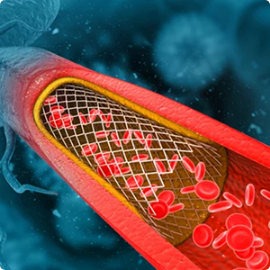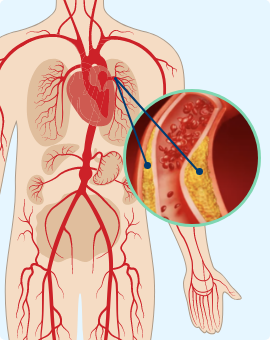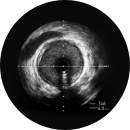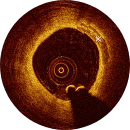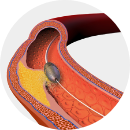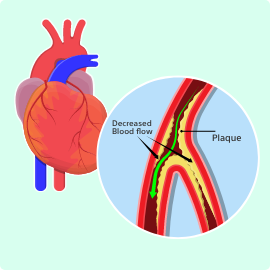
Ensuring Optimal Angioplasty Outcomes: Why Calcium Management Matters
The Importance of Calcium Management in Ensuring Optimal Angioplasty Outcomes
04 February 2025
The increasing burden of cardiovascular diseases (CVDs) in India has emerged as a major public health problem. CVD accounts for a quarter of all deaths in the country, with ischemic heart disease and strokes being the main causes. This is an alarming situation, considering the early age of onset and considerably high mortality associated with these diseases, especially when contrasted with the global average.
The Impact of Heart Disease in India - A Quick Insight
India is struggling with one of the most prevalent health conditions in the world that manifests itself in the form of heart disease and can affect not only one person but the whole family and the health system as a whole. Unlike in any other country, heart disease has a devastating effect on countless Indian citizens, and it also causes a lot of unnecessary burdens for the contemplations of the public health sphere.
Besides that, genetic predispositions and insufficient resources relating to health services really explain the previous situation because the situation is reported to be worse, especially in rural areas where there are few resources or more resources are inadequate. New lack of knowledge about preventive measures and symptoms is hard to manage other complicated diseases and it usually results in delayed diagnosis and treatment.
Heart disease, on a personal level, is merely a medical problem, but overall, when it comes to social and economic factors, this issue has a far-reaching effect. The expensive treatment causes productivity to decline severely, and they may have psychological effects on both family members and economic growth. Besides, this pressure on the healthcare infrastructure emphasizes the significance of innovative preventive technologies, including early detection methods and accessible treatments.
Understanding Arterial Calcium and Its Challenges
The Complications Posed by Arterial Calcium in Angioplasty
Calcification poses a significant obstacle in angioplasty, which influences procedural efficacy and increases the likelihood of complications. Calcified deposits can also impede the passage of angioplasty instruments and limit stent expansion, which is necessary for keeping arteries open after the procedure. These complications are observed to have significant effects on patient outcomes.
How Technology Plays a Pivotal Role in Calcium Assessment
Advancements in medical imaging technologies, such as intravascular ultrasound (IVUS) and computed tomography (CT) scans, play a critical role in detecting and assessing arterial calcium. Some of them are:
These detailed imaging techniques are vital for planning an effective angioplasty procedure, especially given the complex cases prevalent in India’s diverse population. Accurate assessment of calcium deposits allows for a more tailored and individualized approach to angioplasty, improving the chances of a successful outcome.
Advanced Therapies for Calcium Management in Angioplasty
In the realm of angioplasty, managing calcium buildup in arteries is crucial for ensuring successful outcomes. To address the threats that come with arterial calcification, various medical innovations have led to the development of a variety of calcium modification techniques. Some of them are as follows:
Each of these therapies offers a unique approach to managing arterial calcium, ensuring that the angioplasty procedure can be carried out more effectively. They not only improve the procedural success rate but also lessen the risk of complications associated with calcium, such as arterial rupture or dissection. Incorporating these methods into the angioplasty process, especially in cases of severe calcification, can lead to significantly better patient outcomes.
Tailoring Treatment to Patient Needs
The Importance of Calcium Management in Angioplasty
Why is it essential for patients to Understand Calcium Management?
Patients must gain knowledge on how calcium should be managed during angioplasty for several main reasons, mainly focused on achieving the best possible outcome of the procedure and maximizing patient safety. With a calcium score, all of the components that determine the complexity of an angioplasty procedure and its results are quickly learned. Hence, educating patients about its management is paramount. Important.
Secondly, gaining information about calcium management boosts patients’ ability to play a part in making treatment decisions. One should be aware of the significance of calcium precipitation as it makes it possible for patients and healthcare providers to form individualized treatment patterns together. This cooperation promotes better communication and joint decision-making, naturally leading to better results and patient satisfaction in the long run.
On top of that, broader awareness directs attention toward calcium management practices that help to prevent CVD. The constant understanding of the role of calcium deposition by the patient may qualify them for the adoption of healthy lifestyles, including a composed diet, regular exercise, and fully executing drug prescriptions, which significantly cut down calcium deposition and the need for further treatment options.
Conclusion
Addressing heart disease in India requires a comprehensive approach, and the management of calcium during angioplasty is a critical factor. Today, in the age of rapid technological development and an increasing focus on lifestyle improvement, an individualized approach to patient care is critically important.
Proper calcium management is not simply an option; it is also a critical factor that is crucial for improving patient outcomes. Adept handling of arterial calcium by healthcare practitioners can improve the efficiency and safety of angioplasty procedures.
Thus, this strategy can not only cause a decrease in heart disease mortality but also has the potential to improve the quality of life for countless individuals, marking a positive stride in India’s ongoing battle against cardiovascular diseases.
Disclaimer: The information presented by Boston Scientific India is for educational purposes only and does not recommend self-management of health issues. The information should not be treated as comprehensive and does not intend to provide diagnosis, treatment or any medical advice. Individual results may vary and hence, it is advisable to consult your doctor regarding any medical or health related diagnosis or treatment options.
IC-1871702AA-0424
Related Articles
Tags
Heart Attack | Calcium-Management | HD-IVUS | Angioplasty | Rotational Atherectomy | OCT | Intravascular Lithotripsy | Arterial Calcium | Cardiovascular Diseases
